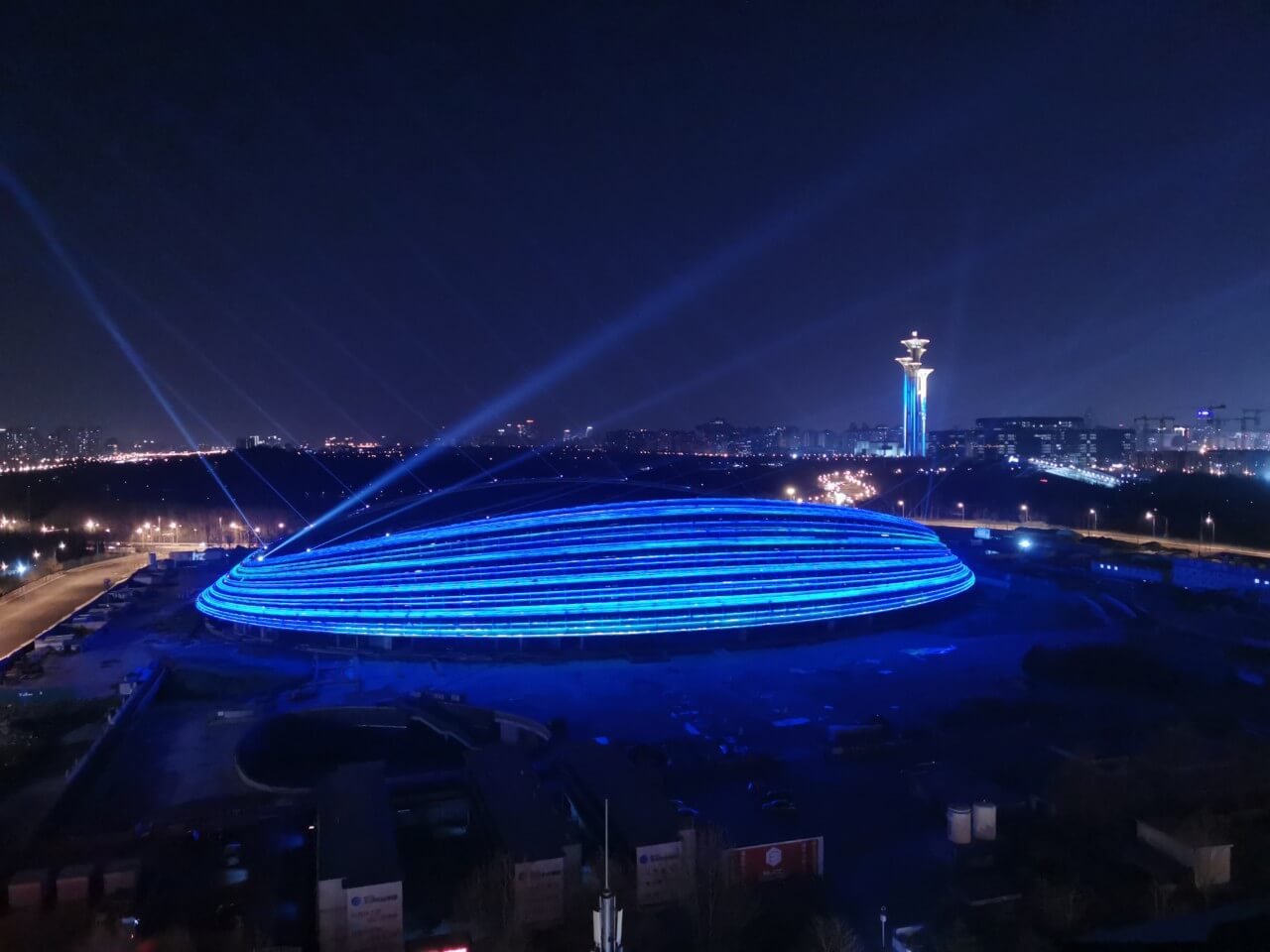Beijing’s Bird’s Nest and Ice Cube have some new company.
The 12,000-seat National Speed Skating Oval (NSSO), colloquially known as the Ice Ribbon, has been formally unveiled at Beijing’s Olympic Green as the only newly constructed permanent venue for the 2022 Winter Olympics and Paralympics. Beijing is the first city in Olympics history to host both the summer and winter games, and many of the landmark facilities erected just over a decade ago for the 2008 Summer Olympics have been converted for new, winter sports-appropriate use. (Case in point: the former Beijing National Aquatics Center, aka the Water Cube, has been reimagined as a curling venue known as the Ice Cube; meanwhile, the National Indoor Stadium, once the spot for artistic gymnastics, trampolining, and handball events, will be used for ice hockey.)
Spanning a site of roughly 42 acres with a gross floor area of about 312,000 square feet (not including a sprawling subterranean parking garbage), the NSSO was designed by the Brisbane-based Asia Pacific office of global stadia specialists Populous, which was selected for the project via an international design competition in 2016. Construction on the ovoid arena, which debuts as the largest speed skating facility in Asia, kicked off the following year at a site that was once home to temporary field hockey and archery venues. The NSSO hosted its first pre-Olympics competition this past October.
Joining Populous in the role of lead architect was LDI (Beijing Institute of Architecture Design), structural engineer Richard MacDonald, and project contractor Beijing Urban Construction Group Co., Ltd. Buro Happold served as MEP engineer and oversaw the project’s green building and all-important ice-making components.
The project client was the Beijing National Speed Skating Oval Operation Co, which heralded the “extraordinary” completed project as “not only a world-class sports facility designed to be among the best in the world,” but also “an international landmark for Beijing that enhances the landscape and urban fabric of the area.”
Joining 1,312-foot (400-meter) racing track and over 129,000 square feet of ice surface within the NSSO, the arena’s signature element design element is a lacy assemblage of 22 light strands (the venue’s namesake “ribbons”) that flow up and around the structure. At night, the building comes to life when the ribbons are illuminated to put an “exciting spectacle” powered by an “endless array of lighting programs.” Per Populous, the “distinctive facade that celebrates the elegance, precision, pace, and dynamic of speed skating.”
As Tiric Chang, principal of Populous in China and co-director of the NSSO, explained in a news release, inspiration for the building’s conceptual design was drawn from his own childhood memories of time spent on the ice with friends at Beijing’s Shichahai ice rink. Specifically, inspiration came from a traditional Beijing ice game involving a high-speed spinning “ice top,” Chang explained.
“The ribbons of the design make reference to the floating silk ribbons of the artwork my family had dedicated their time to – which was the study and preservation of the Dunhuang Grottoes, a significant collection of Buddhist art from the Tang dynasty,” he said. “It guided the design team to boldly extend the concept of a high-speed rotating ice top to create 22 rotating light bands for the façade, which not only represent the ice surface and the shape of the oval, but also perfectly demonstrated the high-speed movement of speed skaters.”
In addition to the eye-catching exterior, also boasts some serious sustainability bona fides as one of the first venues in the world to incorporate advanced, high-efficiency carbon dioxide transcritical direct cooling ice technology. Per the firm, the effect in reducing carbon emissions is roughly equivalent to planting over 1.2 million trees. The facility set these high sustainability benchmarks while being designed to fully meet the International Olympic Committee and the International Skating Union requirements.
Post-Olympics, the NSSO will be converted into an ice sports-centric community hub and will host winter festivals, ice hockey matches, public ice skating, private ice shows, and more. As noted by Populous, the reuse of the Ice Ribbon supports the Chinese Central Government’s Ice and Snow Sports Development Plan, which aims to lure 300 million people to the snow and ice for recreational and sporting activities by 2025.
The controversy-shrouded 2022 Winter Olympics commence this Friday, February 4.
